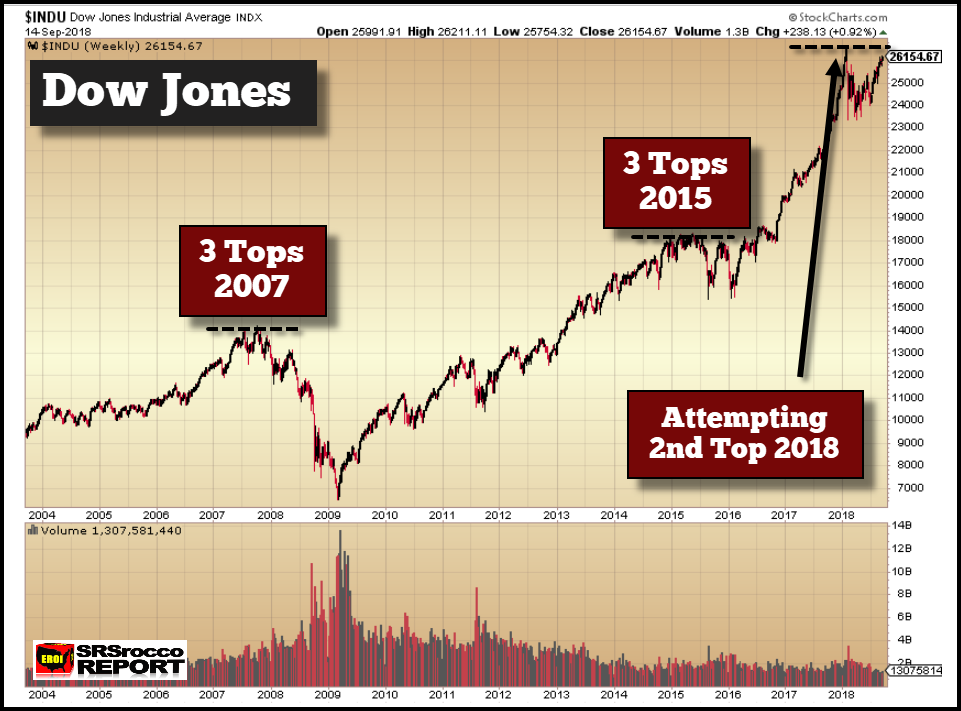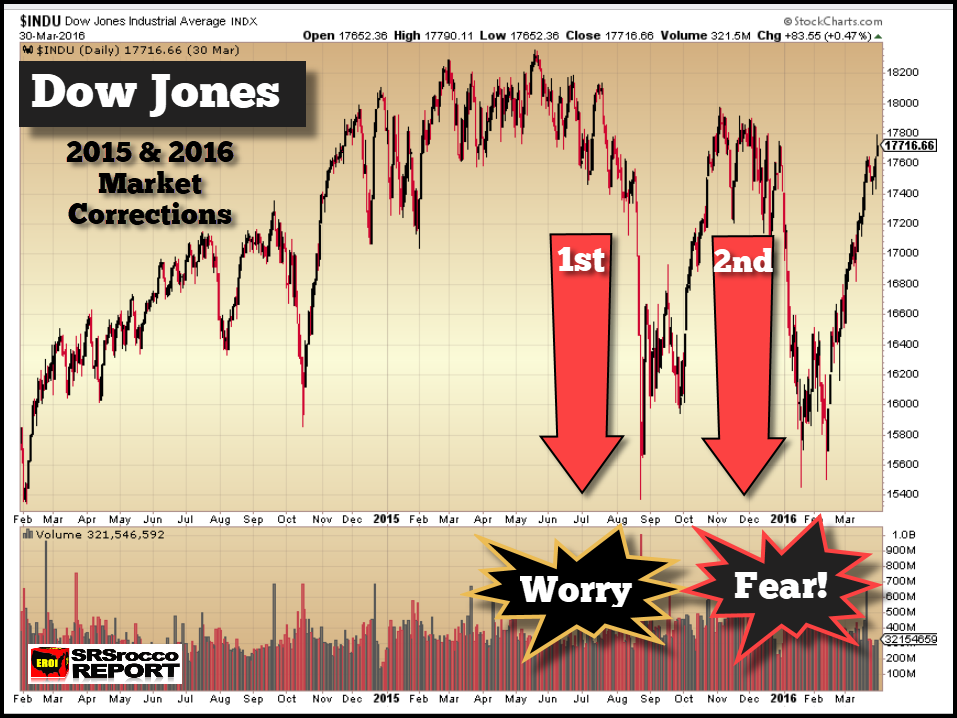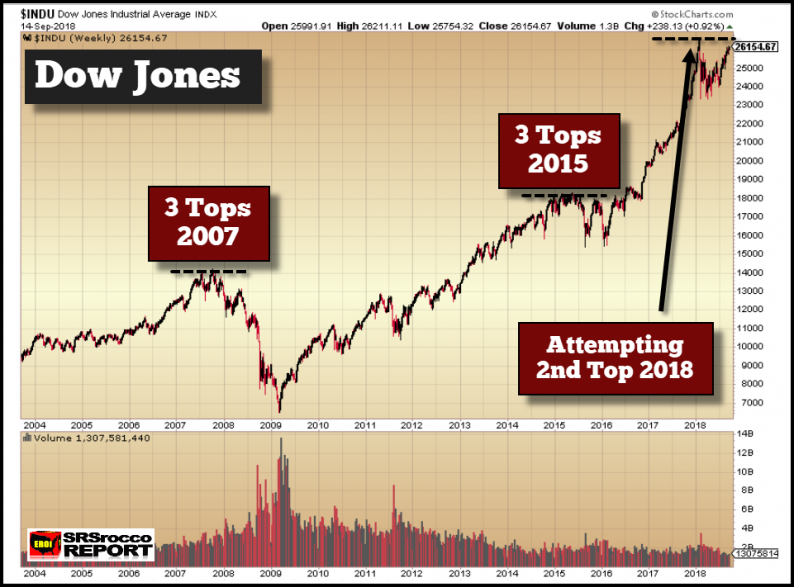The question on the minds of many investors, is which of the precious metals will be better investments during the next market crash? I should know because I receive this question in my email box quite often. So, I decided to test the price action of several metals and how each traded during a large market correction.
This article will focus on the top four precious metals, gold, silver, platinum, and palladium. Even though Rhodium and other metals are considered precious, the ones listed above take the lion’s share of the investment market. Furthermore, while platinum and palladium are purchased as investments, they have a much larger industrial component than gold or silver.
As I have mentioned many times, gold and silver disconnected from the broader markets when the Dow Jones Index fell 2,000 points in the first six weeks of 2016.
The two reasons I believe gold and silver jumped considerably as the markets sold off at the beginning of 2016 were:
To explain why investors were spooked in 2016, we need to look at the following chart:

Typically during a major correction, the market makes several attempts at a top. In 2007, there were three tops made before the market finally came down in 2008. Then in 2015, we had three more tops and two large corrections. The reason investors’ worry turned into fear at the beginning of 2016 was that the last top did not reach the previous 18,000 level.
And this can be seen in the next chart:

You will notice that from March to July 2016, the Dow Jones kept trading above the 18,000 level. But by August, the market rolled over and experienced the first significant correction. However, when the Dow Jones recovered in September and October, its peak did not surpass the 18,000 level. So, as the market suffered the second large correction, investors thought this was going to be the BIG ONE.











Leave A Comment